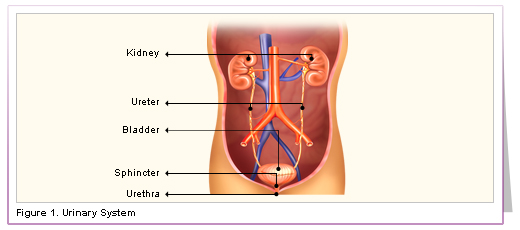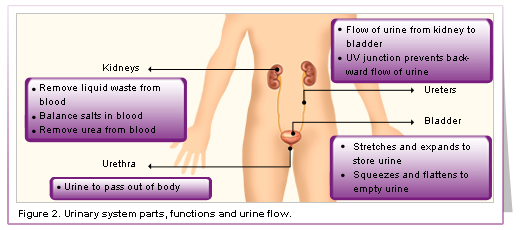Know Your Urology System
Components of the Urinary System
The human urinary system [Figure 1] consists of organs in which the formation, collection,
transportation and excretion of urine occur.

Kidneys are a pair of purplish-brown, bean-shaped organs situated at either
side of the spine. Its main function is to filter the waste materials from the blood
and excrete them from the body in the form of urine. Kidneys also aid in maintaining
a balance of salts and other substances in the blood.
The waste fluid (urine) formed in the kidneys are transported through ureters. Ureters
consist of a pair of narrow tubes that connect the kidney and the bladder. The ureter
enters the bladder wall at the ureterovesical (UV) junction, which acts as a one-way
valve, preventing urine to flow backward to the kidney. The urine travels down to
the ureters from the kidneys and is stored in the urinary bladder.
Bladder is a balloon-shaped organ present in the pelvis. The outer wall of the bladder
contains muscles and connetive tissues. The urinary bladder has two sphincter muscles
that act as valves and help in preventing the urine from leaking out. The bladder
has a rich nerve supply, which signals you that it is time you visit the restroom.
The bladder muscles stretch when urine fills the bag and squeeze when emptying the
urine out. Finally, urine is expelled from the body through a tube called urethra.1,
2
Functions of the Urinary System

